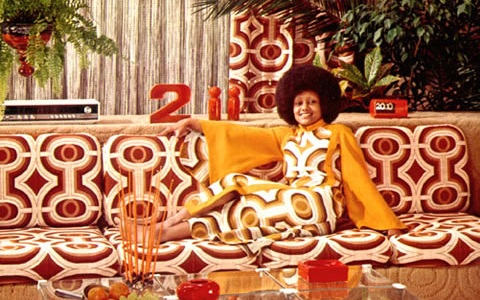
June 7, 2014, by Stephen Mumford
The Seventies
If obliged to live my whole life perpetually in a single decade, I hope it would be the 1970s. Some think of it, with all its excesses, as the decade that taste forgot. But it was a time of extremes and never boring. Starting more or less with the first manned moon landing, there was a sense that anything could be achieved, which for some translated into anything goes. It was an age of decadence, after penicillin and before HIV, where loose morals were indulged and we looked forward to the possibilities of the future.
There were real choices to be made. In the UK, politics were red and blue: not yet fused into an indistinguishable purple on all sides. Ideology wasn’t a dirty word but something to be explored intellectually. And this polarisation was found at a world level too. East and West stared at each other over the Berlin Wall. We weren’t always sure there would be a tomorrow. Kubrick’s Dr Strangelove had shown us how easy could be an accidental Armageddon. We would have a bloody good time while we waited.
Football was fantastic. The club scene in England was at its peak and we came to dominate European competitions. Even Nottingham Forest got in on the act, going on to be the only side Champions of Europe more often than Champions of their own country. Internationally, England flopped but we had possibly the three best-ever World Cup competitions in ‘70, ’74 and ‘78, played in style and increasingly tight shorts.
Only the 60s comes close to the variety and progress in popular music that we saw. The 70s began with a rise of heavy metal and glam rock. We had the androgyny of Bowie, Marc Bolan of T-Rex and Russell Mael of Sparks; not forgetting Freddie Mercury featuring in Queen’s iconic video to Bohemian Rhapsody. Some of those pop stars looked like they came from outer space. Yet just a few years after, this was also the decade that brought the knee-jerk reaction of punk rock with The Damned and the anarchic Sex Pistols. It became gradually more melodic and introspective with the likes of Joy Division. Meanwhile, in Sheffield an obscure band called The Future were inventing much of the soundscape of contemporary electronic dance music and would achieve success after mutating into The Human League. It was such an exciting time to be young.
But there certainly was bad taste. Swedish film Tillsammens (Together, 2000) depicts it well. In clothes and home furnishings, we went crazy with colours and designs. Loud curtains and wallpapers were the backdrop as we filled our houses with challenging shapes, materials, abstract art, impractically uncomfortable chairs and sofas and – the ultimate home accessory – the lava lamp. There were sideboards, serving hatches and unconventional dining room tables. At my house, it needed two strong men to unload and carry our new record player, fully integrated with a radio system and space for storing LP records. The must-get item for most families was the colour TV, financially obtainable only on a weekly rental scheme. To mark the increased take-up, Dr Who changed to colour in 1970. Just look at the garish costumes in Carnival of Monsters to match the outlandish plot.
Yet the promiscuous and permissive society crashed and burned when the underlying economic turmoil became too much. The party was effectively over when Thatcher’s Conservatives came to power in ’79 with an agenda of Victorian values, to revive belief in a long-gone British Empire, and replace all those bright polyester clothes with beige tweed. No wonder us children of the 70s found the pale brown 80s drab and depressing. It was one almighty hangover. Joy Division singer Ian Curtis couldn’t stay for These Days. Some say that if you can remember the 60s, you weren’t really there. With the 70s, it was precisely the opposite. No one who lived through it would forget.
University of Nottingham Department of Culture, Film and Media
No comments yet, fill out a comment to be the first

Leave a Reply